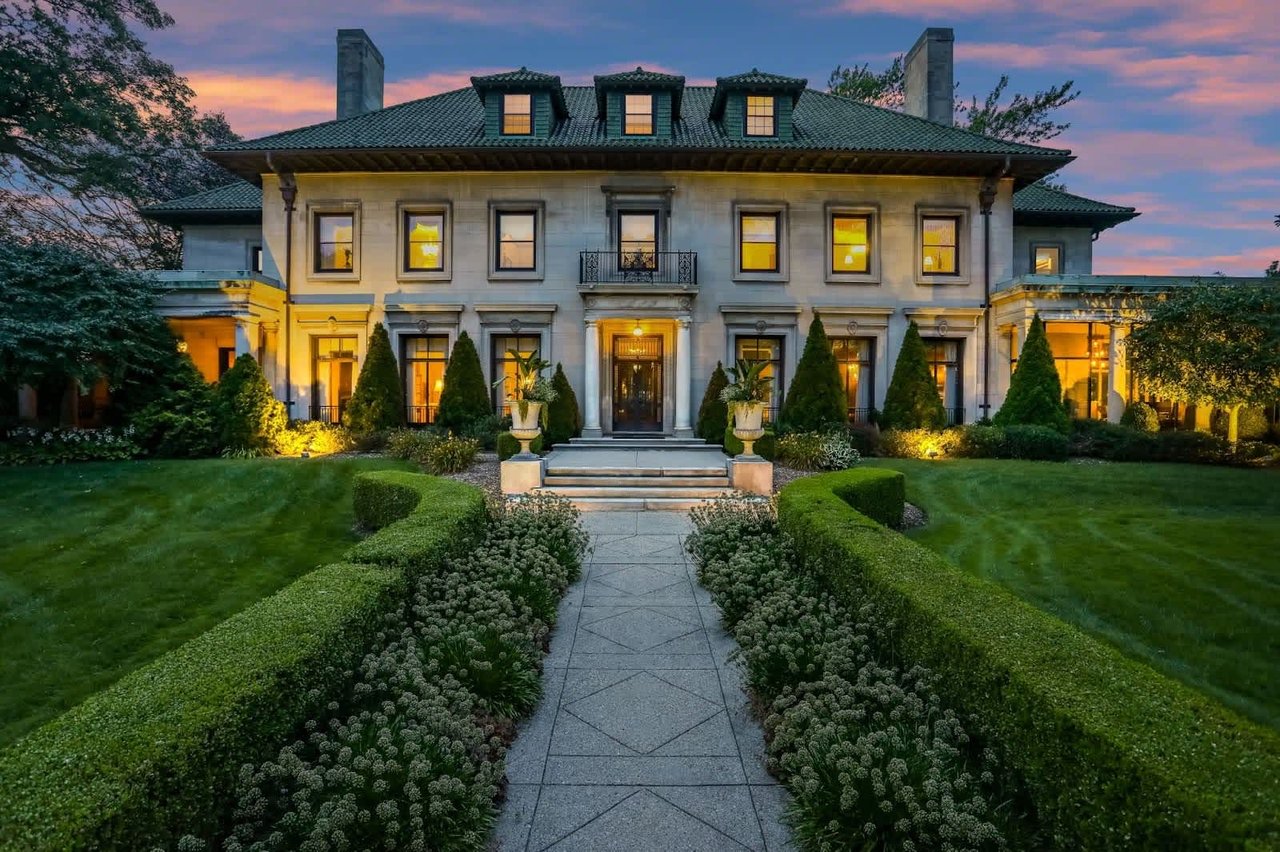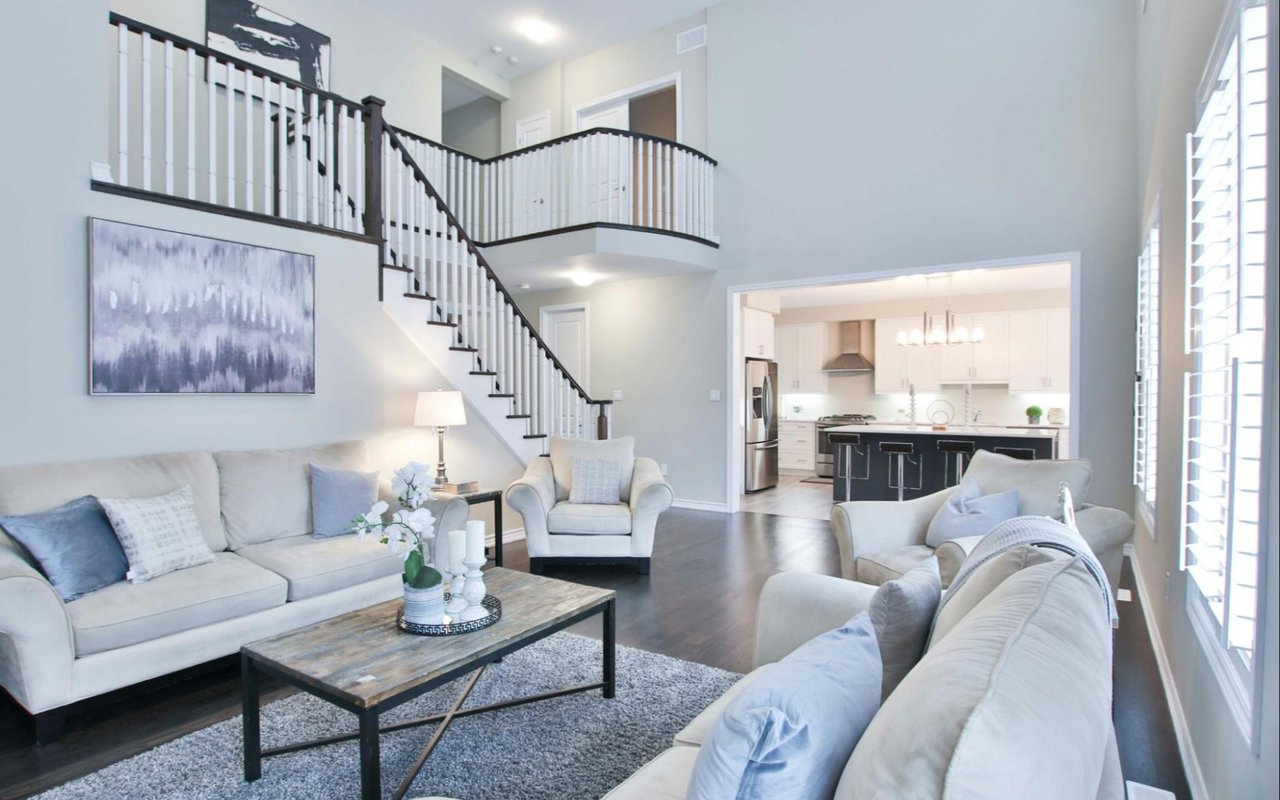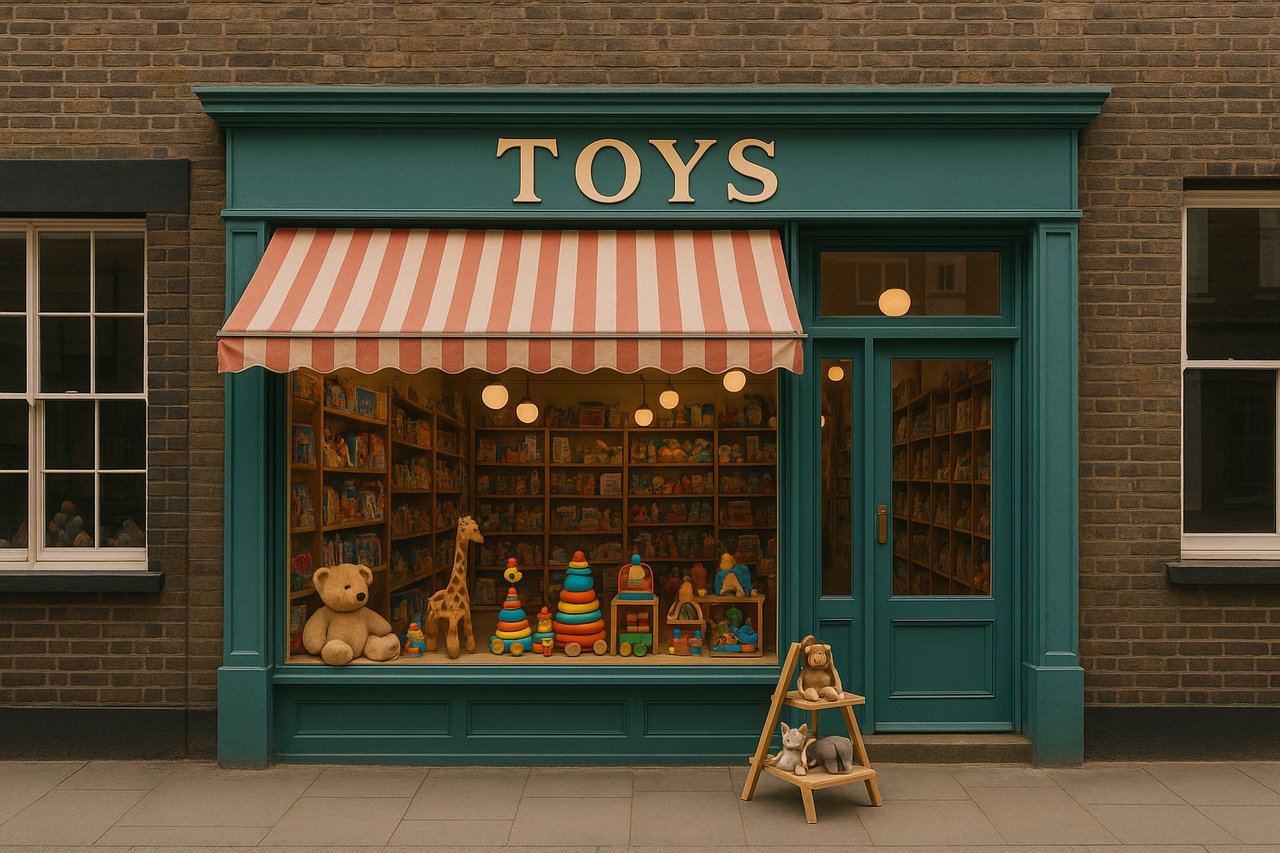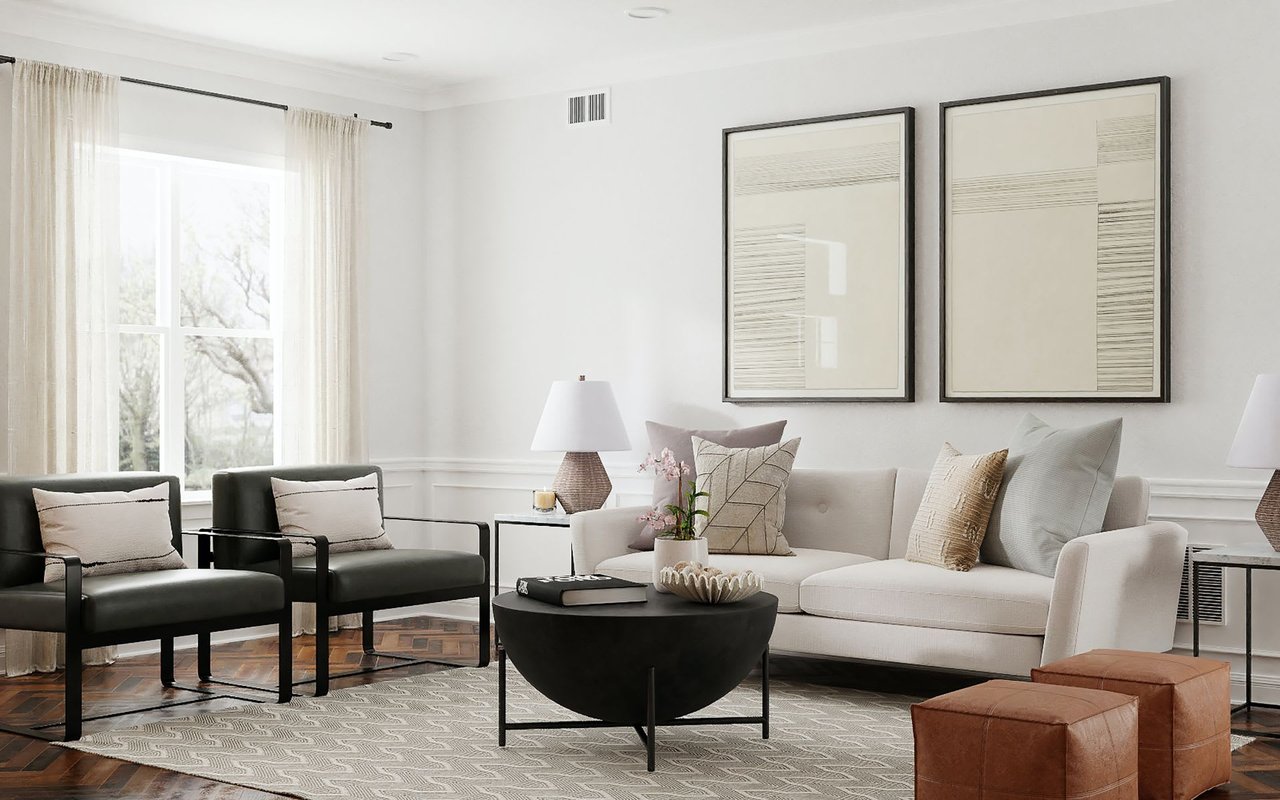Founded in 1701 and incorporated just over a century later, Detroit is rich in history. Aside from its long-standing notoriety as the world's one-time automotive capital and the birthplace of Motown, one of the most compelling aspects of the city's history and heritage is its collection of historic homes. These residences offer a glimpse into the architectural trends of bygone eras and stand as testaments to the city's resilient spirit and cultural identity. From stately mansions to quaint cottages, Detroit's historic homes are integral to understanding the city's past and present.
Over the past two decades, Detroit and its array of neighborhoods have taken steps to preserve the region's unique and storied history, including conservation efforts to save, restore, or maintain many of Detroit's most notable historic homes. Each property tells a unique story, showcasing architectural brilliance and the meticulous care taken to preserve it. Below, we explore seven of the most noteworthy historic homes in Detroit.
Dorothy G. Turkel House
2760 West Seven Mile Road, Palmer Woods
Year Built: 1955
Architectural Style: Usonian
Architect: Frank Lloyd Wright
Year Built: 1955
Architectural Style: Usonian
Architect: Frank Lloyd Wright
The Dorothy G. Turkel House is a prime example of Frank Lloyd Wright's Usonian homes, designed to be affordable yet aesthetically pleasing. Located in the Palmer Woods neighborhood, this two-story residence features Wright's signature horizontal lines and large windows, blending seamlessly with its natural surroundings. The Turkel House is a masterpiece of mid-20th-century design and a symbol of innovation in residential architecture. Its preservation allows visitors to experience Wright's vision of organic architecture, where the home and its environment are in perfect harmony.
The Whitney Mansion
4421 Woodward Avenue, Midtown
Built: 1894
Architectural Style: Romanesque Revival
Architect: Gordon W. Lloyd
Built: 1894
Architectural Style: Romanesque Revival
Architect: Gordon W. Lloyd
The Whitney Mansion, also known as "The Whitney," is a grand example of Romanesque Revival architecture. Built for lumber baron David Whitney Jr., the mansion boasts 52 rooms, ten bathrooms, and 20 fireplaces. Its exterior features intricately carved stone and woodwork, while the interior is adorned with opulent details, including Tiffany stained-glass windows. Today, The Whitney serves as a fine-dining restaurant, allowing patrons to dine in luxury while surrounded by Detroit's rich history.
The Alfred J. Fisher Mansion
1771 Balmoral Drive, Palmer Woods
Year Built: 1928
Architectural Style: Italian Renaissance
Architect: Leonard Willeke
Year Built: 1928
Architectural Style: Italian Renaissance
Architect: Leonard Willeke
The Fisher Mansion is a stunning example of Italian Renaissance architecture. Built for automotive body manufacturer Charles T. Fisher, the mansion is known for its lavish interiors, including a grand ballroom and an ornate chapel. The Fisher family was instrumental in Detroit's automotive industry, and this mansion—one of ten Detroit-area historic homes owned or built by the Fisher Family—reflects their status and influence. It remains among the city's most opulent historic homes, meticulously preserved to maintain its original grandeur.
Col. Frank J. Hecker House
5510 Woodward Avenue, Cultural Center
Year Built: 1891
Architectural Style: French Renaissance / Chateauesque
Architect: Louis Kamper
Year Built: 1891
Architectural Style: French Renaissance / Chateauesque
Architect: Louis Kamper
The Col. Frank J. Hecker House, often called the Hecker House, is a striking 21,000-square-foot example of Chateauesque architecture. Commissioned by Col. Frank J. Hecker, a prominent railroad magnate who served Presidents William McKinley and Theodore Roosevelt in transportation capacities, the mansion features a limestone exterior with two three-story turrets and dormer windows reminiscent of a French chateau. Some notable features are the 12-foot stained glass windows, Italian Siena marble, and a dozen fireplaces. After serving various functions over the years, the mansion is now home to a law firm, ensuring its preservation and continued use.
The Albert Kahn House
208 Mack Avenue, Brush Park
Year Built: 1906
Architectural Style: English Renaissance
Architect: Albert Kahn
Year Built: 1906
Architectural Style: English Renaissance
Architect: Albert Kahn
The Albert Kahn House, located in Brush Park, was the residence of renowned Detroit-based architect Albert Kahn. Known for his industrial and commercial buildings, Kahn's home is a testament to his versatility and skill in residential design. The English Renaissance style of the house is muted in favor of more domestic European aesthetics, featuring a stone and stucco facade and slate roof. An elegant, spacious home, the layout was adapted to the needs of modern living—for the time—with interior Elizabethan-style wood paneling adding a classic design touch. Since Kahn's passing in 1942, the home has been the Detroit Urban League headquarters.
The Ransom Gillis House
205 Alfred Steet, Brush Park
Year Built: 1876
Architectural Style: Venetian Gothic
Architects: Henry T. Brush & George D. Mason
Year Built: 1876
Architectural Style: Venetian Gothic
Architects: Henry T. Brush & George D. Mason
The Ransom Gillis House, located in the Brush Park neighborhood, is a striking example of Venetian Gothic architecture and stands out as one of Detroit's most visually arresting homes. Built for wholesale grocer Ransom Gillis, the house features elaborate brickwork, pointed arches, and ornate stone details. However, the home's most prominent feature is its exquisite, intricately tiled turret, seemingly floating 12 feet above the ground. After falling into disrepair, the house was restored as part of a revitalization effort, bringing new life to this historic gem. The Ransom Gillis House now stands as a symbol of Detroit's commitment to preserving its architectural heritage.
The Bishop Mansion
19366 Lucerne Drive, Palmer Woods
Year Built: 1925
Architectural Style: Tudor Revival
Architects: McGinnis and Walsh
Year Built: 1925
Architectural Style: Tudor Revival
Architects: McGinnis and Walsh
The one-time residence for the Episcopal Bishop of Michigan, The Bishop Mansion, also sometimes referred to as The Bishop Gallagher Residence, for the first Bishop to call the palatial, 32,500 square foot property home, is a beautiful example of Tudor Revival architecture. The largest residence in Detroit features steeply pitched roofs, a central four-story main house flanked by diagonal wings, and extraordinary stone detailing that transitions into an exquisitely crafted interior with extension wood, iron, stone, tile, and marble accents. A preservation in progress, with partial updates already complete, the home is currently listed for sale, waiting for an inspired owner to complete renovations to this vital piece of Detroit history.
Ready to Learn More about Detroit's Celebrated Residential History
Detroit's historic homes are more than just buildings; they are chapters in the city's story. Each home featured here showcases a distinct architectural style and a piece of Detroit's past, preserved for future generations to appreciate. They also represent a small sample of the city's extraordinary collection of homes.
Whether you're an architecture enthusiast, simply curious about Detroit's history, or exploring these historic homes as a genuine residence or investments, Embrace the opportunity to experience the charm and elegance of Detroit's architectural heritage, one landmark home at a time.
Contact Austin Black II today to start your journey into Detroit's luxury real estate. Allow Austin's extensive experience and expertise within the city's luxury residential marketplace, including historic and newer built homes, to help you navigate Detroit's coveted real estate scene.





